Weathering,
Erosion, and Deposition
Introduction
Watch the "Time-Lapse: The Power of Water"
video about Prince Edward Island beach in Canada.
In your science
journal,
answer these questions.
1.
What happened to the rocks and sand?
2.
What do you think caused this change?
In this unit, you will describe the process of
weathering, erosion, and deposition.
·
Weathering à breaks it
·
Erosion à takes it
·
Deposition à drops it
Weathering
Land on Earth changes before our eyes. As you
have learned, some changes are caused by moving plate boundaries. Other changes
happen because of weathering and erosion.
Weathering has to happen before erosion.
Weathering is the process that breaks down
rocks into smaller rocks. Cool nights and hot days make things expand and
contract, which causes rocks to crack and break apart.
Weathering breaks down rocks into smaller
pieces. It does not include moving rocks to another place.
Weathering can be:
- Chemical, such as when water runs over rocks, causing minerals
in the rocks to dissolve and break the rocks down
Chemical weathering occurs when the
composition of a rock changes. The processes of hydrolysis and oxidation can
cause many changes to rocks. As an example, water can dissolve the minerals
within certain rocks. This is how limestone caves are formed. The dissolved
minerals from the rocks form stalagmites and stalactites.
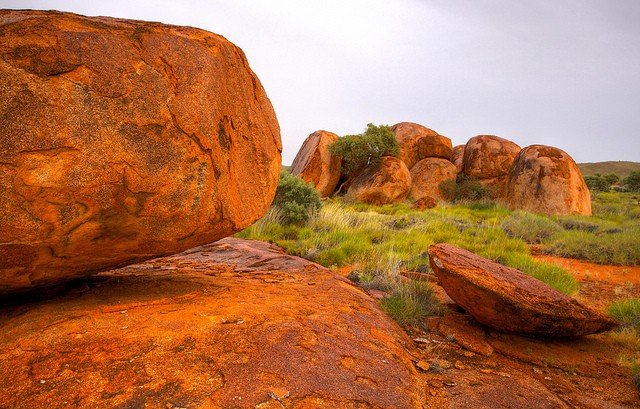
Temperature and moisture
are critical for chemical weathering.
Chemical weathering occurs
more quickly in hot, humid climatic regions.
- Physical, such as when rocks crash into each other and break
apart
Physical weathering is sometimes referred
to as mechanical weathering and is generally characterized by the process of
abrasion (scraping). An example of physical weathering is wind blowing tiny
particles of sand through the air, striking a rock formation. Similar to how
sandpaper works, the particles of sand rub against the rock formation. This
wears the rock down over time. Similarly, waves crashing against a rock wall
will slowly break down the rock. Rain can also cause weathering. Water collects
within the cracks of a rock. When the temperature drops, this water freezes and,
in doing so, expands, causing the crack to grow. When the water thaws, it
reaches further into the crack, and the process repeats. A final example of
physical weathering is rocks frozen within a glacier. The glacier moves slowly,
rubbing the trapped rocks heavily against the ground, causing rocks underneath
it to break. Physical weathering occurs more intensely in very hot or very cold
environments.

Water that freezes inside
cracks in a rock may widen the cracks
- Biological, such as when roots grow into a rocky area, breaking
down the rocks.
Biological weathering is when rocks are
broken down due to plants, animals, and bacteria. An example of biological
weathering is the roots of a plant growing within the cracks of a rock and,
over time, breaking the rock. Burrowing animals also contribute to the
weathering of rocks. When animals burrow, they move fragments of rock closer to
the surface. The fragments are then more exposed to environmental factors that
can lead to weathering. Fungus and algae growing on rocks can also release
chemicals that cause rocks to break down.
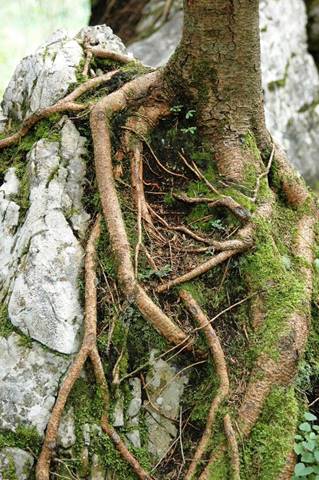
The roots of plants
may reach inside rock openings.
Over time, they may push
apart sections of rock.
In your science
journal,
fill in the blanks.
1.
The process of moving pieces of rocks to another place is called
_____.
2.
_____ weathering is when rocks crash into each other and break
apart.
3.
Rocks can create new _____ when they settle into new places.
4.
Water running over rocks and breaking them down is one type of
_____ weathering.
5.
Roots breaking up rocks is an example of _____ weathering.
6.
_____ is the process of breaking up rocks into smaller pieces.
Erosion
Remember that weathering has to happen
before erosion. The rocks must be broken
into smaller sediments before they can be eroded.
Erosion moves rock pieces and sediments to
another place by ice, wind, water, or gravity. Because of erosion, rocks wear away
over time, sometimes forming canyons and caves, or breaking down mountains.
Surface water, glaciers, groundwater, and
waves—can help move weathered rocks to new places.
Erosion is related to weathering, a natural
process that slowly breaks apart or changes rock. Once the rock is affected by
weathering, the erosion process causes bits of rock and Earth to be carried
away from their original location.
Types of
Erosion
Groundwater
Rainwater that settles below the ground or soil
is called groundwater. It has some carbonic acid that comes from the natural
carbon dioxide in the air. When groundwater flows across solid rock, the acid
breaks up the rock. Over a long time, caves form, with openings and tunnels
where the rocks have been eaten away.
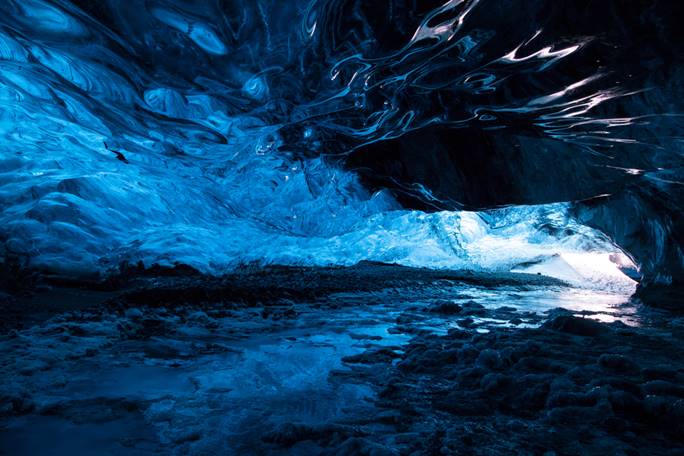
Groundwater
Surface Water
Water can flow over land when an area gets a
lot of rain. This runoff water moves rocks, sand, and soil from one place to
another. Over time, streams and rivers flowing past rocky banks or mountains
can wear away the mountains, carrying pieces of rocks somewhere else. Erosion
can lead to landslides and flooding, which changes the landscape as mud and soil
moves around. Sometimes, houses and even cities can be covered up in
landslides.
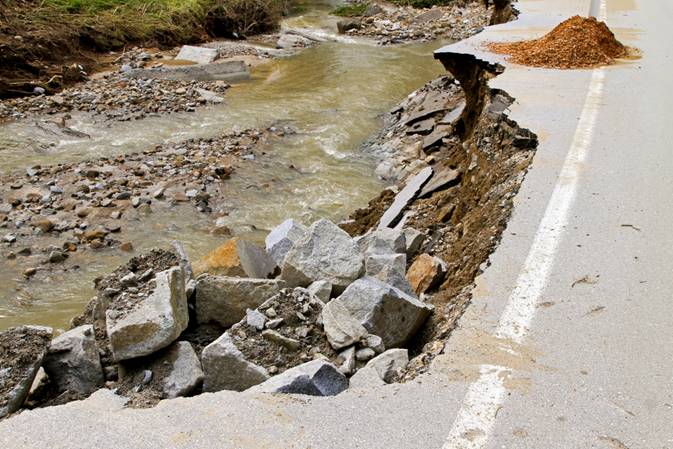
Surface Water
·
Sediments transported by water appear rounded and smooth
·
A most influential force in erosion
·
Transports large objects with fast-moving streams
·
Helps create landforms:
rivers – lakes - oceans
Glaciers
Glaciers scrape ice against the land and cause
erosion. This process can change the shape of the land over time and make deep
valleys. Rocks and other sediments can freeze into glaciers and move to other
places as the glaciers move.
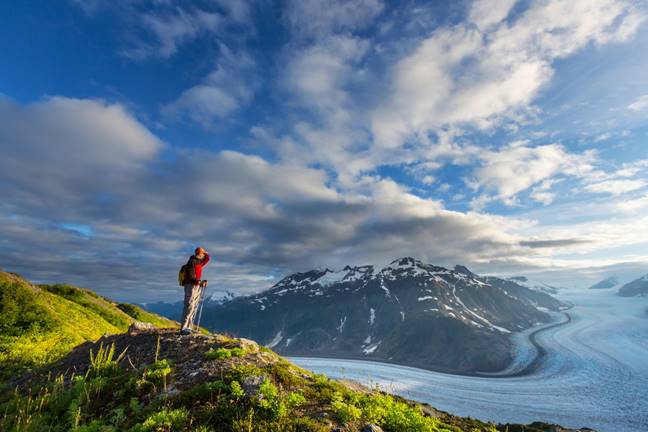
Glaciers
·
Moving ice that carries rocks
·
Appear scratched and grooved
Waves
Waves smashing into cliffs erode the rocks over
time. This creates a cliff wall, showing the rock layers that formed it. Waves
carry the sediment from these rocks to form a beach by the cliffs.
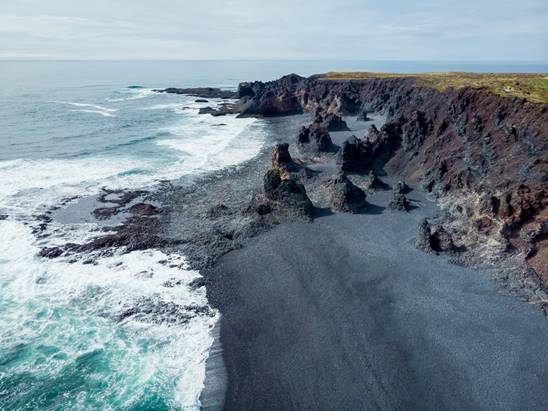
Waves
·
Relentless pounding can throw broken rocks against the shore and
wash away fine grains
·
Erodes softer and weaker rock first
·
Harder and more resistant rocks are left behind
·
Can create landforms based on where waves hit land and which
rocks they transport
In your science
journal,
answer these questions based on the image.
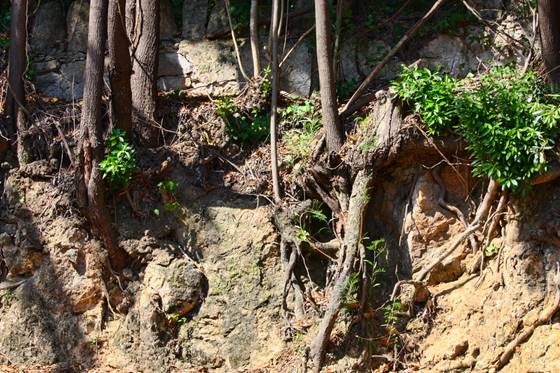
Tree Roots Exposed Due to
Soil Erosion
1.
Name one cause of the erosion.
2.
Give one reason why this type of erosion happened.
3.
Describe one idea about how this landform will look in the
future.
Deposition
The Earth is constantly changing. Along with weathering
and erosion, deposition changes the Earth's surface daily. The deposition is
the process by which rock and sediment are dropped or deposited in a new
location.
Weathering breaks the rock into
smaller pieces as waves crash into it. Erosion occurs when those particles
of rock are carried away by the wave. But what happens to those particles next?
They might wash up on a beach. They might settle on the ocean floor, forming a
new layer. Deposition occurs when these particles find a new place to settle.
Erosion brings the soil and rock from a
landslide tumbling down the mountainside, but the process of settling in a new
place at the bottom is deposition.
Sediment carried away by the flowing water of a
river is often dropped at the river mouth. This sometimes forms deltas, which
are small landforms.
The deposition is also at work when the wind
drops sand, causing dunes to grow in size. The sediment and rock particles in
each of these examples have been dropped in a new place. This is deposition.
Therefore, erosion, weathering, and deposition
work together to change existing landforms and create new landforms.
Wind Deposition
Transportation of particles in the wind:
·
Material is deposited when the wind changes direction or loses
its strength.
·
Fine particles can be deposited hundreds of km from their source
in the desert
·
Heavier material may be blown along the ground

This dune in Death Valley,
California, shows secondary sand ripples along its slip face.
Water Deposition
As the speed of the water decreases, the
water's ability to carry sediment also decreases.
·
Deposited in streams, rivers, and oceans:
·
Running water deposits sediments where the slowing water can no
longer move them.
·
The largest particles are deposited near the shore.
·
Increasingly smaller particles settle out farther from the shore
where the water is calmer

Deposition effects
Ice Deposition
Glacial flows of ice become slower when the ice
begins melting
Deposits left by glaciers:
·
Look similar to normal river deposits and is called outwashes.
·
Moraines are large chunks of broken rock left at the base and
sides of the glacier as it melts and recedes.
·
The finer material is carried in the rivers that form when the
glacial ice melts
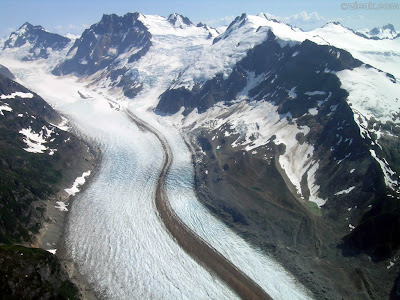
Glaciers produce many
kinds of debris and drifts.
Let’s Practice